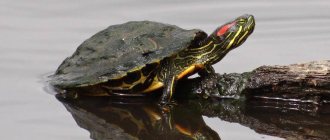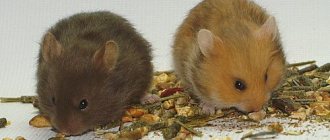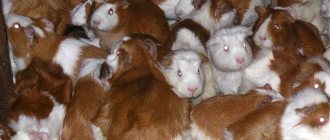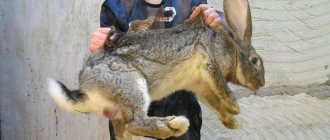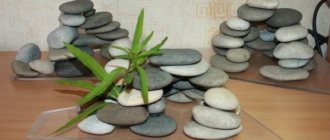Review author: “ZooVita”
Turtles are quite demanding and difficult reptiles to keep. And this applies, first of all, to their diet. Modern pet food manufacturers offer turtle owners a wide variety of “balanced” foods that make caring for their pet much easier.
However, in order to choose the right basic and additional diet and bait, it is necessary to understand in more detail what you can feed the turtle.
Peculiarities
Based on the specifics of their diet, different turtles are divided into three types:
- predatory;
- herbivores (herbivores);
- omnivores.
The type of food depends on the type of turtle. Armored reptiles are either aquatic or terrestrial. As you age, eating habits may change. Thus, red-eared and spotted turtles prefer live food in their youth. As they get older, they eat plant-based foods more often.
Most aquatic turtles are predators, these include:
- Red-eared.
- Trionics turtle.
- Swamp turtle.
- Spotted.
- Musky.
- Silt tadpole.
- Cayman.
Omnivores – land and aquatic species:
- Caspian water.
- Adults spotted and red-eared.
- Three-keel water.
- Mediterranean.
- Balkan.
Herbivores are predominantly terrestrial:
- Star-shaped.
- Central Asian.
- Egyptian.
- Prickly.
- Greek.
- Spider.
If you don't know what kind of turtle you have, check out the most popular types of pet turtles.
Description
The low carapace (carapace) is almost oval; if you look at it from above, you can see that the width in the back is slightly wider than in the front. The length of the shell is 20 cm or more in adult large turtles. Since water has always been the key habitat for turtles, the carapace scutes naturally fit perfectly together. In terms of their structure, the carapace and plastron are completely streamlined and have no protrusions. Large claws are located on the legs, small membranes are located between the toes. The claws of a swamp turtle can easily tear prey apart and can significantly scratch your hand.
The tail of this turtle is relatively long, can reach 3/4 of the length of the carapace (about 12 cm) and during swimming it takes part as an auxiliary rudder during any turns (the main steering is carried out by the legs) and as a counterweight that holds the turtle in the required position during maneuvers. The carapace usually has a dark olive, dark green, sometimes almost black color, the plastron is light, yellowish. The shell, neck, head, legs are covered with small light spots. Often females have yellow eyes, while males are slightly reddish. Females have slightly shorter tails than males.
What do turtles eat?
Reptiles eat a variety of foods. Even carnivores will need plant food in the amount of 10% of the daily diet, and herbivores will need some lean meat, insects and slugs. Feed omnivores by combining animal and plant foods in equal proportions.
Rinse food, remove seeds and peels before serving. Feed your pets finely chopped food.
Water
In the natural environment, aquatic predators consume the meat of waterfowl. Most reptiles are fed similarly to the red-eared slider. The feeding features of the red-eared slider are discussed in a separate article.
The basis of the diet is animal food:
- bloodworm;
- fillet of lean sea and freshwater fish (flounder, hake, pollock, perch, cod);
- small aquarium fish (guppies, platies, swordtails);
- dried daphnia;
- gammarus;
- mormysh;
- earthworms;
- special food for turtles;
- snails and slugs (large pond snails, coils and ampullaria).
It is advisable for the predator to swallow the fish whole, this will bring him more benefit. Aquatic and semi-aquatic plants are suitable as a herbal addition to the main daily diet:
- hornwort;
- Houttuynia cordate;
- water hyacinth;
- pinnate;
- creeping mazus;
- loosestrife;
- Aponogeton bispica;
- duckweed;
- cabomba.
Reptiles love to dive into water while eating. In this case, equip a shallow pond. As they grow, feed your reptiles meat products with the addition of vegetable products. Combine plant and animal foods for omnivores. Observe the reptiles' reactions to different foods.
Land
Feeding for land turtles depends on the type of turtle.
Suitable for herbivorous reptiles:
- clover leaves;
- field lettuce;
- prickly artichoke;
- sprouted wheat;
- dandelions;
- coltsfoot;
- aloe leaves;
- nettle;
- mint;
- bananas;
- zucchini;
- carrot;
- cucumbers
Add to the diet of omnivorous species of animals and insects:
- mice and rats;
- beetles and food cockroaches;
- earthworms and mealworms;
- woodlice;
- frog.
Types of turtles
Herbivores
This large group of reptiles needs food of plant origin. Meat can be added to the feed in very small quantities, and the basis of the diet is vegetables, fruits and grass. The most common types of turtles used as pets are Central Asian and Mediterranean turtles.
Predatory
These reptiles eat meat, plant food serves as a snack and does not exceed 10% of the volume of food consumed. They need to be given seafood and lean fish as food. Almost all aquatic turtles are predators.
Most popular:
- Trionix;
- swamp;
- red-eared
The last two species feed on fish only at an early age. Adult turtles switch to mixed types of food.
Omnivores
Their diet consists of plants and meat in approximately a 1:1 ratio. Due to evolutionary features, this group most often includes land reptiles, as well as red-legged, adult red-eared and marsh reptiles.
Food in winter
The change of season is reflected in nutrition. In the summer, feed herbivores and omnivores with greens, vegetables and fruits. Turtles eat frequently and have small portions. In cold weather, reptiles are content with frozen foods and hay; they eat rarely, but in large quantities.
You can plant plants in pots, this will provide the turtles with fresh greens to eat in the winter. Propagate plants such as duckweed or hornwort so that turtles can be fed aquarium flora continuously. To do this, you will need to purchase a separate aquarium and properly care for the plants.
Reproduction
In the spring comes marriage time. During this period, turtles (age 6–8 years and shell 9–12 cm) are far from water bodies. Turtles can also mate in water. The sperm of turtles can be stored in the female’s tract for up to 1 year or more; as a result, a female caught in the wild can “personally” lay completely full-fledged eggs after 5-6 months. Between May and July, females lay eggs three times in holes dug in the ground. During the season, the female produces 1–3 clutches. The depth of the pits is approximately 10 cm. The eggs that fall into them are beautiful: their shells are snow-white, they themselves have an oblong, regular shape, size 30 x 20 millimeters, weight approximately 8 g. In any clutch there are about 5–10 eggs, and they The female buries it most carefully. After approximately 2-3 months, these eggs produce tiny turtles about 24–25 millimeters long, weighing 5 g, with a large yolk sac on the belly.
The shell of young turtles is usually dark brown with yellow lines. They dig small tunnels near the nest, where they spend the winter in most cases. In the spring, turtles crawl out of their shelters onto the surface of the earth and begin an independent life. The incubation temperature is about 25–30°C and the duration is 54–90 days. Incubation humidity 90%. The water depth for newly born turtles is approximately 5 cm. Young individuals feed on daphnia and insect larvae.
Drinking regime
Turtles usually do not drink water due to the awkward structure of the head and larynx: the water they drink will immediately pour out through the nostrils. The animal needs to be given water if it is dehydrated. The main amount of fluid enters the body through food. Turtles also absorb moisture through their skin. Regardless of what your turtle eats, perform weekly water treatments at home. Fill a shallow bath so that the turtle's head is above the water level. Bathing time is 10–20 minutes. Comfortable water temperature is 30–36 degrees.
Drink
These reptiles do not require daily water intake. Reptiles obtain the necessary fluid by consuming succulent food - greens, vegetables and fruits.
They have the ability to absorb the right amount of water through the pores of the skin. It will be enough to place a water tank in the terrarium 1-2 times every week for 15 minutes. The water level should not be too high, about halfway through the shell. The head is located above the surface of the water. The reptile will not suffer from thirst. The water balance in the body will be at a stable level.
Treats
Supplement the diet of land reptiles:
- champignons, puffballs, oyster mushrooms and other easily digestible mushrooms;
- sunflower seeds;
- bran;
- mango;
- plums;
- peaches;
- beets;
- boiled chicken or quail eggs;
- snails and slugs - once every few weeks.
Feed adult aquatic turtles:
- raw lean meat;
- baby frogs;
- tadpoles;
- chicken, fish, beef liver;
- shrimp;
- octopus tentacles;
- mussels.
Harmful products
Some plants are harmful to reptiles:
- medicinal plants containing alkaloids;
- poisonous plants of the nightshade and buttercup families;
- dieffenbachia;
- elodea;
- spurge;
- azalea;
- hydrangea;
- daffodils;
- ambulia;
- saffron;
- cyclamen;
- digitalis;
- delphinium;
- lily;
- jasmine;
- lupine.
The following products are contraindicated:
- boiled, fried, boiled food;
- sausages, minced meat, pates;
- citrus;
- tops, root crops of radishes, potatoes and radishes;
- avocado;
- eggplant;
- gooseberry;
- parsley;
- cabbage;
- rhubarb;
- berry, fruit seeds;
- porridge;
- dairy products;
- bread;
- food for warm-blooded animals;
- crab sticks;
- tomatoes.
Remember that you should not completely abandon heat treatment of meat. Pour boiling water over meat products to minimize the risk of infecting the turtle with parasites. Feed mixtures containing a lot of fishmeal, dyes and preservatives can also cause harm.
Products available in limited quantities:
- apples;
- corn;
- radish;
- asparagus;
- squid;
- legumes;
- cereal grains, mustard;
- fatty fish and meat;
- pineapples;
- raspberries, strawberries;
- watermelon and melon;
- locusts, crickets, cockroaches;
- onion garlic;
- basil;
- too sweet fruits and berries.
Differences in the diet of small and adult individuals
- Small turtles feed 2-3 times a day, adults – 1 time.
- Young animals need more calcium and vitamin D. Feed your pets food mixed with bone meal and mineral and vitamin supplements. Serve these mixtures daily. Adult turtles only need calcium once a week.
- Young turtles can go without food for a week, and older reptiles can go without food for 2 weeks.
- Turtles are more sensitive to monotonous food. Provide them with as varied a diet as possible.
- It is correct to feed turtles with food particles no larger than a blueberry. For adult turtles, a piece of food should not exceed half the size of its head.
Ready-made feed
With a constant lack of time in the modern world, people are forced to buy ready-made food for their pets. Sometimes this method also saves effort - you don’t need to prepare the mixture yourself. Below are the main types of commercial turtle food.
Overview of store options
Arcadia Herbi mix
The food is based on plant components with the addition of pollen. It is rich in mineral and vitamin supplements. Suitable only for land turtles.
Sera Raffy Vital
The food is intended for omnivorous turtles. Contains grain (wheat and oats), dried vegetables, fish and its processed products. Enriched with vitamins A, D and B.
Zoomir Tortila granules
The food is suitable mainly for omnivorous mature turtles. Ingredients: alfalfa, vetch, dandelion, berries, carrots, small crustaceans.
Zomir Tortila Fito
The composition includes alfalfa, vetch, dandelion, nettle, cereal seeds, apples, carrots, lingonberry leaves, and a vitamin and mineral complex. Suitable for herbivorous species.
There are almost no prepared foods for carnivorous turtles, since the animals need fresh food and not processed products (for example, fishmeal). The owners of these animals are strongly recommended to feed the reptiles fresh, chilled fish.
DIY food
Herbivorous turtles, like carnivorous ones, rarely have their food prepared. In the first case, it is enough to simply cut the vegetables and put greens in the feeder; in the second, chop the fish and seafood. Therefore, omnivorous aquatic turtles most often need prepared food.
The universal recipe includes:
- cabbage – 50 grams;
- carrots – 70 grams;
- apples – 50 grams;
- squid fillet – 100 grams;
- any lean fish – 145 grams.
All components must be mixed, passed through a meat grinder and a gelatin solution (10 grams per 50 milliliters of water) added. The cooled mixture must be dripped with a mineral additive in the amount specified in the instructions. Cut the resulting “jellied meat” into small cubes.
This recipe is suitable for a small omnivorous turtle - with a shell about 15 centimeters in diameter. The red-eared turtle will especially appreciate this recipe.
Errors
- If there are multiple turtles in a tank, some turtles may become malnourished. Monitor the feeding process of turtles, provide them with enough food.
- Plants collected from forests or grown at home are safer than greens found near the road, so feed your turtles plants that are safe.
- Don't overdo it with meat. Its excess leads to the development of rickets.
- Overfeeding is a common mistake for beginners. Monitor the amount of food offered to the animal.
- Be careful when identifying the type of turtle. If you are a beginner, consult with experienced aquarists. Incorrect identification of the species will lead to errors in diet preparation.
- An incorrect diet causes illness, disrupts metabolism and leads your pet to dehydration. A dehydrated animal needs frequent baths and water in the terrarium. A healthy animal does not need a drinking bowl.
- You cannot feed turtles by hand. Animals quickly get used to this method of feeding and do not eat on their own. The turtle will also begin to bite, associating hands with food.
- Loud noises and strong smells during feeding lead to digestive problems.
- A turtle's appetite for cheeses and bread does not indicate that it can be fed these foods.
What can overfeeding cause?
An important condition for the nutrition of a red-eared pet is not only a variety of diet, but also a regime. Overfeeding leads to diseases: pyramidal shell and obesity.
Not only the diet, but also the regimen is considered an important condition for nutrition.
Overeating in juveniles is extremely harmful, because they are actively developing, as well as during the adaptation period after purchasing or after illness of a red-eared turtle.
It is not recommended to force feed turtles. But long-term fasting is also contraindicated for them.
A healthy reptile should swim freely in the water and easily crawl onto the island. Excess weight will prevent the turtle from hiding its head in its shell.

